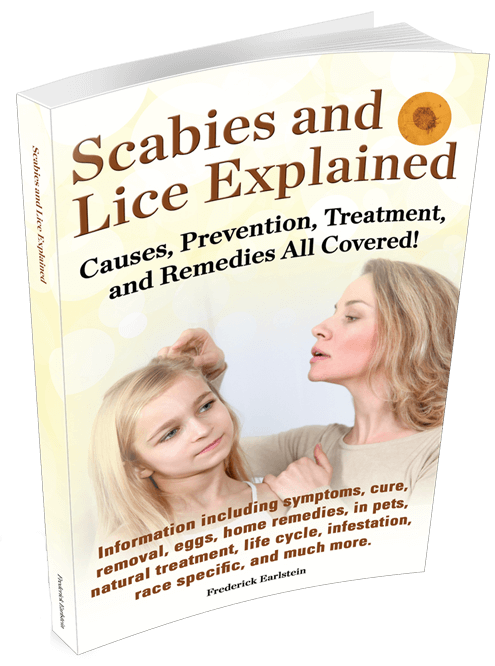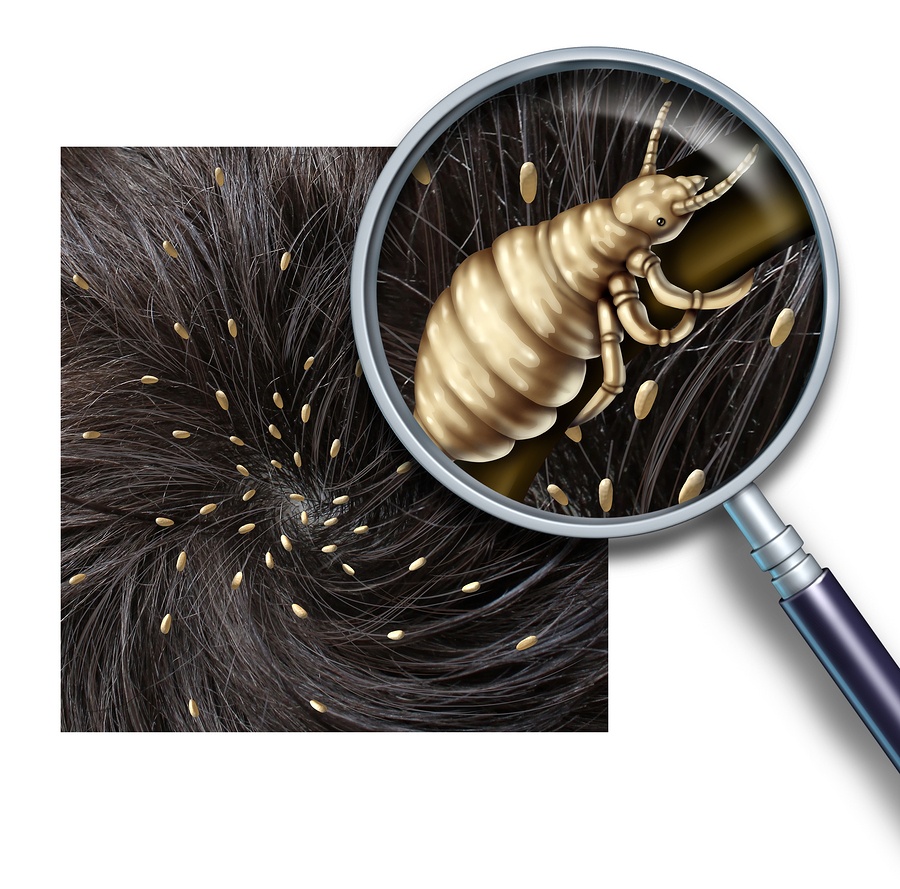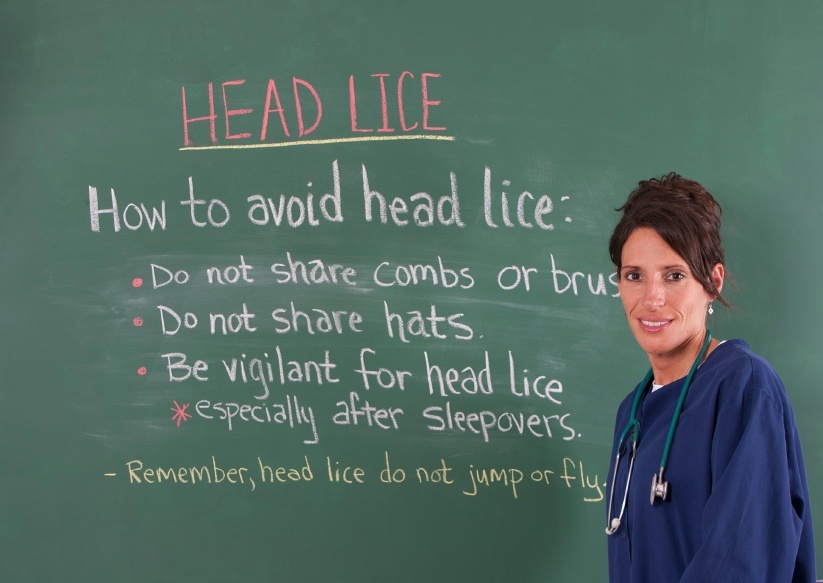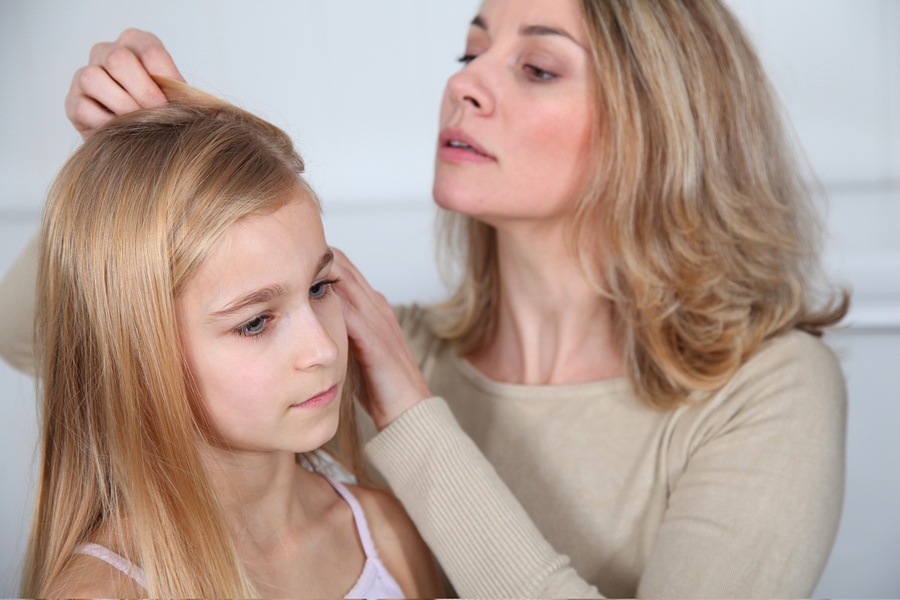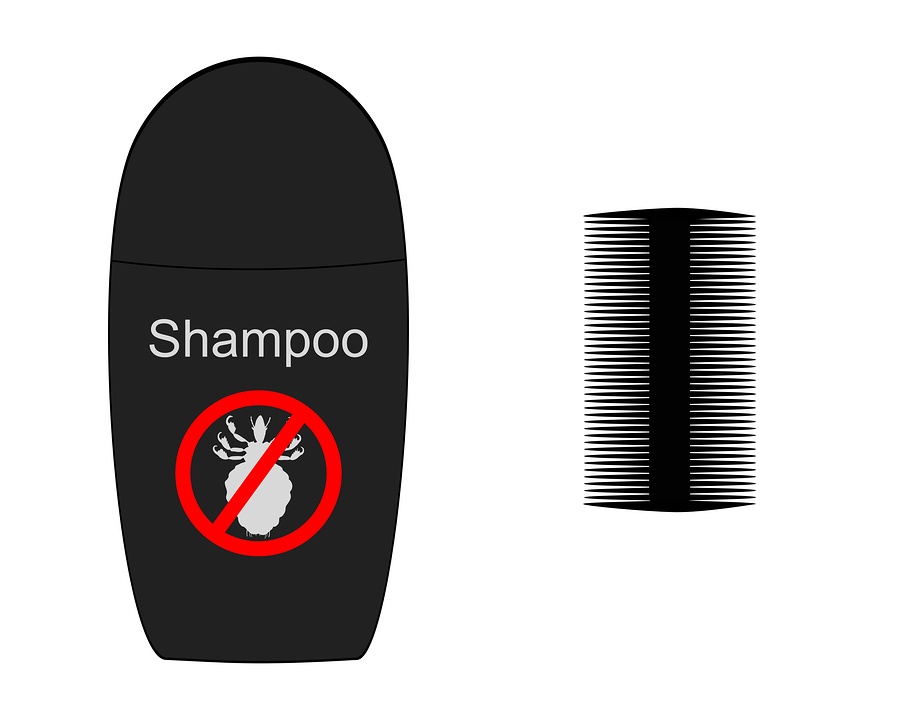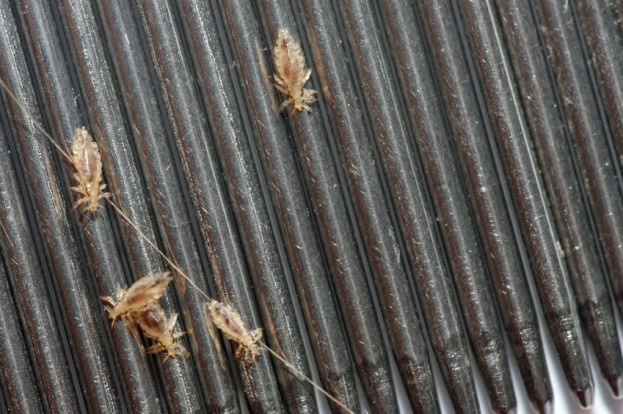CHAPTERS
Navigate to chapter
► Chapter 1: Understanding Head Lice (Click For FREE Sample)
► Chapter 2: Understanding Body Lice
► Chapter 3: Understanding Pubic Lice
► Chapter 4: Understanding scabies
Chapter 1: Understanding Head Lice
All forms of lice move by crawling. They do not fly or jump. You cannot become infested with lice simply by standing next to or even being in the same room with someone who has the parasites.
If, however, you come into contact with that person, or potentially with something they have worn, transmission is almost guaranteed. The three types are:
– Head Lice (Pediculus humanus capitis)
– Body Lice (Pediculus humanus corporis)
– Pubic Lice (Pthirus pubic)
If a person carries either head or body lice, they are said to have pediculosis. The main difference in these two parasites is that body lice feed twice a day, whereas head lice feed more often. There is also a slight size difference.
If pubic lice are present, the condition is called pthiriasis, or in the common vernacular “crabs.” (The name derives from the fact that the front two claws on this species are larger and look like a crab’s pinchers.)
Head Lice
Adult head lice reach a length of no more than 2.1 to 3.3 mm. They have six legs, each outfitted with claws or “hooks” at the end used for tightly attaching to the hair shafts where they live.
Head lice are found on the head and neck, and occasionally in the eyebrows. Favored spots for high concentrations are:
– the back of the head,
– around the ears,
– and near the neckline.
Adult head lice will deposit their eggs at the base of the hair shaft. The parasites pass through three discernible life stages:
– nit or egg
– nymph
– adult
All three life stages may be present on an infested individual at one time. This is why it is imperative to make sure that all “eggs” have been killed before an individual can be pronounced “clear.”
(It’s actually a misperception that anti-lice agents kill lice eggs. Most do not. The second treatment is to kill nymphs or juveniles that have hatched since the first treatment.)
Nits or Eggs
The female louse lays her eggs as close to the scalp as possible. The nits become quite firmly attached to the hair shaft, so much so, in fact, that they are very difficult to remove.
The eggs that are most likely to hatch in the required 8-9 days are those that have been laid approximately a quarter of an inch (0.64 cm) from the scalp.
Lice eggs will not live more than a week off a human host, and cannot hatch in an environment colder and less humid than the human scalp.
In appearance, the nits are oval shaped and no larger than a knot in a piece of thread. If you were to place a lice egg next to the back of an American one-cent piece, it would fit between the columns of the Lincoln Memorial depicted on the coin.
Nits are yellow or white in coloration, but can sometimes appear to be the same color as the hair of the person on which they are living. The nits are so tiny, it’s easy to mistake them for flakes of dandruff or even for drops of hairspray.
Nymph
A nymph hatches from the nit and is an immature form of the adult louse. Their appearance is identical to that of the adult. Nymphs feed on blood and will mature in 9-22 days after hatching.
It is easy to mistake a nymph for an unhatched nit, but generally nymphs are found more than a quarter of an inch (0.64 cm) above the base of the hair shaft.
Adult Head Lice
When nymphs have reached full maturity and are classed as adults, they are roughly the same size as a sesame seed. The lice are grey or tan, but may appear darker if they are present in dark hair.
The parasites feed several times a day on blood from the scalp. They can live for 30 days on a host, but will die within 2 days if no host is present.
Adult female lice are capable of laying 6 eggs per day, a fact that perpetuates the infestation and makes eradication more difficult.
This is why anti-lice treatments call for two applications: one to destroy the living lice currently present, and a second to kill those that subsequently hatch.
Distribution and Risk
Lice are distributed globally, and spread most readily among high-risk populations in specific environments. These environments may vary by region and by the degree of development present in the country in question.
In the United States, for instance, head lice are common among groups of children at facilities including, but not limited to:
– child care facilities including day cares
– kindergarten and elementary classrooms
– households with multiple children
Exact figures are difficult to ascertain as head lice can be treated with over-the-counter remedies and are not always reported to health department authorities.
For instance, best estimates suggest that 6-12 million infestations occur annually in the United States among the 3-11 age group.
Over the past few years, cases of head lice have actually increased in the developed world, in part because the parasites have become more resistant to the most common anti-lice agents used in these countries.
Inaccurate Racial Stereotypes
The widely held belief that African-Americans are more prone to infestations of head lice is incorrect. This ethnic group is, in fact, much less likely to have head lice than other races.
Head lice have claws that are adapted for grasping on to hairs, but the shape and width of African American hair renders this adaptation virtually useless. The lice literally cannot attach themselves.
Since hair texture varies from individual to individual, however, it is certainly possible for any person of any/ethnicity to be subject to the presence of head lice, but this is much less likely with African Americans.
Head Lice and Disease
Although there is a strong cultural and hygenic reaction to the presence of head lice, the parasites can, but do not always spread disease.
Conventional medicine insists that only body lice are associated with the spread of pathogens. Head and pubic lice are considered to be uncomfortable annoyances, but they do not constitute a public health hazard.
Many parents object to their child’s school conducting random inspections for the presence of head lice. This is not a reflection on the personal hygiene or even social standing of any given child.
Head lice are highly communicable, especially among children, but an infestation is also highly treatable.
Schools and other facilities are simply trying to prevent a problem before it occurs. Such inspections are a vital part of that preventive program.
Symptoms of Head Lice
The symptoms of head lice include:
– A crawling or tickling sensation on the scalp and in the hair created by the movement of the parasites.
– Itching as a result of an allergic reaction to the bites the lice inflict on the scalp as they feed.
– Open sores that form on the head due to scratching. Often these sores become infected from bacteria present on the skin.
A person with head lice will also be irritable and tired. The parasites are most active at night, which prevents the affected person from getting an adequate amount of rest.
Additionally, the constant itching causes a high level of discomfort and agitation.
Diagnosing Head Lice
The most reliable diagnosis of head lice is the visible identification of a living adult or nymph on the scalp or in the hair of the affected person. This can be difficult, however, for a number of reasons:
– The parasites are incredibly small.
– Lice and nymphs move quickly.
– They avoid the light.
Often a fine-tooth comb will be used to attempt to trap the lice for examination under a magnifying glass. It is also important to look for nits a quarter of an inch (0.64 cm) from the scalp, but these are hard to detect.
If you suspect you or your child have lice, it is strongly recommended that a qualified health care worker trained in the detection of the parasites make the final determination.
Treating Head Lice
When lice are found on one member of a household, all members should be immediately checked for the presence of the parasites.
All individuals with any sign of an active presence of lice should be treated. If two individuals share a bed, both should be treated, even if one does not immediately show signs of an active infestation.
Two types of lice-specific medications or pediculicides are widely used:
– Ovicidal prepartions that also kill the nits or eggs.
– Weak or non-ovicidal products that treat crawling adults.
If an ovicidal medicine is used, retreatment is only indicated if crawling adults are seen several days after the first dose is administered.
For appliations that are not ovicidal, repeat applications are strongly recommended. Multiple treatments may be necessary to get ahead of the cycle of hatching eggs and disrupt the self-perpetuating nature of the infestation.
Administer anti-lice preparations according to the instructions on the packaging. Read the directions carefully.
For individuals with long hair, it may be necessary to use twice the normal amount.
Make sure that the preparation remains in the hair for the recommended length of time. Additionally:
– Do NOT use a combination shampoo and conditioner medication on the hair prior to administering an anti-lice treatment.
– Do NOT wash the hair for 1-2 days after the lice medication has been rinsed.
If live, active lice are detected 8-12 hours after the treatment, consult with your health provider to determine if another pediculicide product may be needed.
Most of these products also include fine-toothed combs that are useful in dislodging nits and adults from the hair shaft. The comb should be used over a period of 2-3 weeks every 2-3 days to check for any signs of re-infestation.
(Note that some treatments do recommend a second application approximately 7-9 days after the initial use. Increasingly this is becoming a standard protocol. Again, always follow the instructions on the label precisely and do not use more than the indicated amount.)
Over-the-Counter Medications
The major anti-head lice treatments that can be purchased without a prescription include products that contain the following active ingredients.
Pyrethrins
The pyrethroid extracts from which pyrethrins are made are derived from chrysanthemums. Considered to be safe if used as directed, pyrethrin-based products will kill live adult lice, but not the unhatched eggs.
A second treatment is recommended on the 9th day to kill the next generation of hatched lice before they have an opportunity to lay more eggs.
If, however, you are allergic to either chrysanthemums or ragweed, these are not products you should use. Also, these products are not appropriate for children under 2 years of age.
One-Percent Permethrin Lotion
Permethrin lotion is a synthetic pyrethroid. Although products with permethrin will continue to kill newly hatched lice for several days after the initial application, a second treatment on the 9th day is still necessary.
Like natural pyrethroids, permethrin cannot be used on childen younger than 2 years of age.
Prescription Medications
The major treatments that are available and that require a prescription include the following preparations.
Five-Percent Benzyl Alcohol Lotion
Benzyl alcohol, an aromatic alcohol, will kill lice but not nits. Seven days after the initial application, a second treatment is required.
This product can be used with affected individuals age six months and older, but it may cause skin irritation, especially in older people.
Ivermectin Lotion (0.5%)
Ivermectin lotion can also be used in people age 6 months and older. It will not kill nits, but it does eliminate nymphs before they can mature.
The mixture is used as a single application on dry hair with no combing of nits required. (Many people do choose to comb the nits for aesthetic reasons, however. As long as the lotion itself is not removed before the indicated time, this is not a problem.)
It is important not to administer a second dosage of Ivermectin without the guidance of a medical professional as the lotion may not be well tolerated by all patients.
Malathion Lotion (0.5%)
The organophosphate malathion kills live lice and some lice eggs. A second application is still recommended 7-9 days after the first application.
This medication is recommended for affected individuals age 6 years and older, and may cause skin irritation. It is applied to wet hair.
Since the lotion is flammable, it is important not to apply it near a source of heat, including curlers and hair dryers, and not to smoke during the treatment.
Spinosad (0.9%)
Spinosad is a topical suspension made from soil bacteria. It kills live lice and nits. There is rarely a need for re-application. Spinosad may be used in individuals aged 4 years and older.
Retreatments are only indicated if live lice are detected one week after the first use.
Lindane Shampoo
Lindane is regarded as a “second line” treatment. It is an organochloride, but there are significant toxicity issues with its use.
When used too aggressively or not as directed, Lindane can be toxic to the brain and nervous system. It should never be swallowed.
Currently Lindane is only used when other treatments have failed, or when the affected individual cannot tolerate other approaches.
Lindane should not be used with premature infants, infants, HIV patients, individuals with any kind of seizure disorder, women who are pregnant or breast-feeding, people with sores or irritated skin, the elderly, or anyone weighing less than 110 pounds (7.86 st).
Reapplication of Lindane should be avoided under all circumstances.
Supplementary Measures
Although supplementary measures are not technically required to stop an infestation of lice, these tactics carry a strong psychological benefit for the affected person and for others living in the home or using the same facility.
Any hats, scarves, articles of clothing, and bedding worn or used by the affected person in the 2 days before the discovery of the parasites should be machine washed in hot water and dried on a hot air cycle.
All life stages of head lice will die when exposed to temperatures of more than 128.3 F / 53.5 C for more than 5 minutes.
Any non-washable items should be sealed in a plastic bag for 2 weeks. Dry cleanable items should be cleaned and then sealed in plastic bags for at least 2 weeks.
Either boil (128.3 F / 53.5 C for 5 minutes) or throw out grooming aids like combs and brushes used by the affected person, and vacuum floors and furniture to remove loose hairs to which eggs might be attached.
Avoid the use of fumigant sprays. These products carry a high degree of toxicity, especially when inhaled or absorbed into the skin.
Treatment Tips
– Do not exceed the recommended amount of any head lice treatment unless directed to do so by a qualified medical health professional or a pharmacist.
– Be extremely careful to keep all medications away from the eyes. If contamination does occur, flush the eyes immediately with clean water.
– If a medication does not work after 2 to 3 treatments, discontinue and seek professional medical advice.
– Never mix anti-lice treatments, or use more than one treatment at a time.
– Do not use toxic fumigating sprays or fogs.
Preventing and Controlling Head Lice
The most frequently seen vector for the transmission of head lice is head-to-head contact. It is less common for an infestation to be linked to shared items of clothing, or from carpet and furniture.
These parasites can live no more than 2 days without a host. Nits will die within a week if they are not kept in an environment that mimics the temperature level and degree of humidity found on the human scalp.
The following steps will help to prevent head lice transmission and to control the spread of lice once the parasites are detected:
– During play, sporting events, and other activities at a facility where children are present in groups, avoid head-to-head contact.
– Do not allow for the sharing of articles of clothing. Particularly troublesome items include hats, caps, and scarves, coats, sports uniforms, and hair ribbons and barrettes.
– Do not allow personal care items like combs and brushes to be shared. If lice are detected these items must be disinfected in hot water of at least 128.3 F / 53.5 C for 5-10 minutes.
– Towels should not be shared, and should also be washed in 128.3 F / 53.5 C water if lice have been detected.
– There should be no contact with any form of bedding including pillows. This precaution also extends to couches, carpets, and stuffed animals.
– Items that cannot be washed or dry cleaned should be stored in a tightly sealed plastic bag for at least 2 weeks.
Reporting Head Lice
Although it is not required by law that a case of head lice be reported to the health authorities, it is important that this fact not be kept hidden out of shame or embarrassment.
Lice infestations are easily passed from person to person. Childcare workers, school nurses, other parents, facility directors, and other responsible individuals need to know that lice are present.
To completely eradicate the parasites, steps must be taken to rid the environment of surviving eggs. If this is not done, the infestation will continue to manifest regardless of the treatment or deterrents applied.
Want to read the entire thing?
